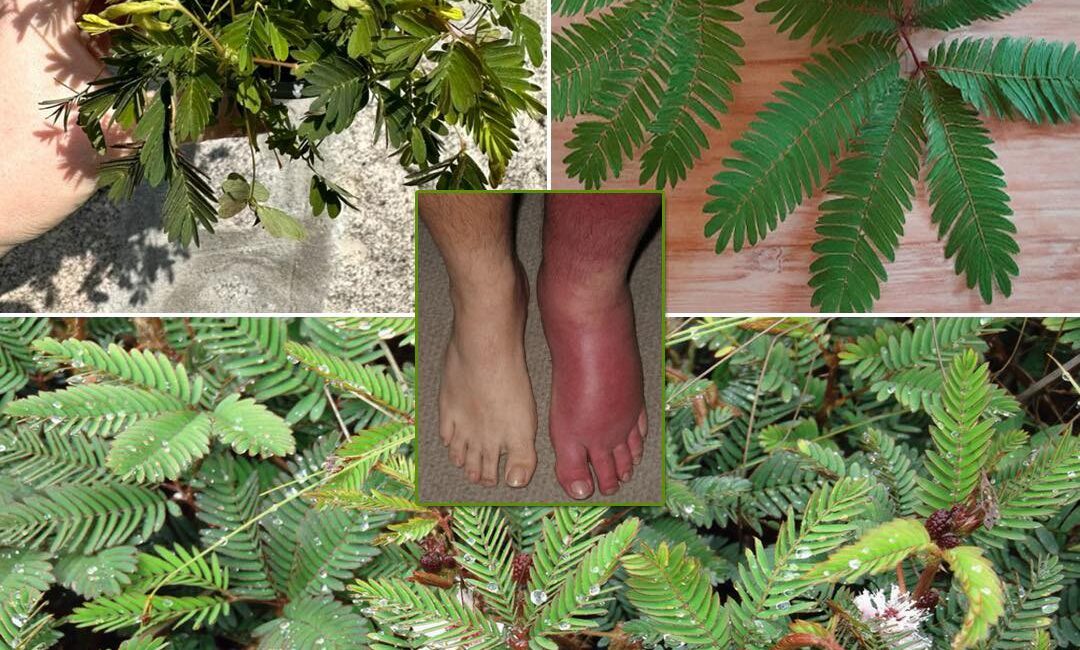Have you ever noticed a curious plant in your garden that folds its leaves whenever you touch them? This natural phenomenon belongs to Mimosa pudica, commonly known as the “sensitive plant,” “touch-me-not,” or “shy plant.” While it’s famous worldwide for its unique and captivating leaf movements, Mimosa pudica is far more than a botanical curiosity. For centuries, this plant has been treasured in traditional medicine across many cultures for its versatile healing properties. Among the many ways to utilize Mimosa pudica, brewing its leaves into a tea has become an increasingly popular natural remedy believed to support digestive health, inflammation, skin repair, and overall well-being.
If you have Mimosa pudica growing in your garden—or can access it through herbal suppliers—this article will guide you through everything you need to know about this “golden” plant: its fascinating biology, traditional medicinal uses, how to prepare its tea, potential health benefits, safety considerations, and other practical applications.
Table of Contents
- Introduction to Mimosa pudica: Botanical and Cultural Overview
- The Fascinating Leaf Movements: Nature’s Sensitive Plant
- Traditional Uses of Mimosa pudica Around the World
- Chemical Composition and Pharmacology: What Makes It Special?
- Health Benefits of Mimosa pudica Tea
- Digestive Support
- Antimicrobial and Antiparasitic Effects
- Anti-Inflammatory Properties
- Wound Healing and Skin Health
- Calming and Relaxation Effects
- How to Prepare Mimosa pudica Tea: Step-by-Step Guide
- Flavor Profile and Variations
- Safety, Precautions, and Contraindications
- Other Uses of Mimosa pudica: Beyond Tea
- Growing and Caring for Mimosa pudica at Home
- Conclusion: Embracing Nature’s Gift with Care and Respect
1. Introduction to Mimosa pudica: Botanical and Cultural Overview
Mimosa pudica is a member of the Fabaceae family, native to Central and South America but now widely distributed throughout tropical and subtropical regions worldwide. It is a fast-growing, creeping or trailing herb or shrub reaching about 1 to 2 feet tall, known for its delicate fern-like compound leaves and small, pink or purple spherical flowers resembling fluffy pom-poms.
Common names vary by region:
- Sensitive plant (due to its rapid leaf movements)
- Touch-me-not (because it reacts to touch)
- Shy plant (leaves fold in “shyness”)
- Dormilón (Spanish)
- Lajjalu (Hindi)
- And many more in local languages
For centuries, indigenous peoples and traditional herbalists have harvested different parts of the plant—leaves, stems, roots—for treating ailments ranging from digestive problems to skin wounds. Today, Mimosa pudica’s unique biological traits and potential medicinal effects are gaining scientific interest, especially its use in herbal teas and supplements.
2. The Fascinating Leaf Movements: Nature’s Sensitive Plant
Perhaps the most astonishing feature of Mimosa pudica is its rapid leaf-folding response when disturbed. This is a defense mechanism known as seismonasty, a type of thigmonasty where mechanical stimulation causes leaflets to fold inward and stems to droop.
How does this work?
- When touched, tiny cells at the base of the leaf stalks (called pulvini) lose water rapidly.
- This causes a change in turgor pressure, making the leaflets fold up.
- The movement can happen within seconds, making the plant appear to “shy away” from touch or even vibrations.
This movement discourages herbivores and protects the plant from damage. The leaves typically reopen in a few minutes to hours, ready to respond again.
Beyond being a natural wonder, this leaf-folding trait also symbolizes sensitivity and responsiveness in folk medicine traditions, representing the plant’s “awareness” and healing potential.
3. Traditional Uses of Mimosa pudica Around the World
Indigenous and Folk Medicine Applications
- Latin America: Used as a poultice for wounds, skin infections, and inflammation. Decoctions of roots and leaves have been applied for diarrhea and intestinal issues.
- India: Known as Lajjalu, Mimosa pudica is used in Ayurvedic medicine to treat bleeding disorders, urinary tract infections, and nervous disorders. It is valued for wound healing and anti-inflammatory properties.
- Southeast Asia: Utilized for respiratory issues, digestive complaints, and as an antiparasitic remedy.
- Africa: Employed traditionally for skin conditions, malaria symptoms, and as a general tonic.
Modes of Application
- Topical: Poultices, pastes, or washes from crushed leaves or roots to promote wound healing or soothe skin irritations.
- Oral: Infusions and decoctions made from leaves or roots used to ease gastrointestinal discomfort, diarrhea, or as a mild sedative.
- Baths: In some cultures, the plant is added to bathing water for its soothing effects on the skin.
While many of these uses stem from anecdotal and traditional knowledge, the plant’s continued use across diverse cultures suggests genuine therapeutic potential worth scientific investigation.
4. Chemical Composition and Pharmacology: What Makes It Special?
Mimosa pudica contains a complex mixture of bioactive compounds, some of which are believed to underlie its medicinal effects:
- Tannins: These polyphenolic compounds have astringent properties, which may help reduce diarrhea by tightening mucosal tissues.
- Flavonoids: Powerful antioxidants with anti-inflammatory, antimicrobial, and protective effects on cells.
- Alkaloids and Glycosides: Various nitrogen-containing compounds with potential bioactivities.
- Terpenoids and Saponins: Known for antimicrobial and anti-inflammatory effects.
- Mimosine: A non-protein amino acid found in some Mimosa species, with various biological activities.
These phytochemicals work synergistically to provide Mimosa pudica’s traditional therapeutic actions, including antioxidant defense, immune modulation, and antimicrobial protection.
5. Health Benefits of Mimosa pudica Tea
Drinking Mimosa pudica tea, made primarily from its dried leaves, has become a favored natural remedy, praised for several potential health benefits:
Digestive Support
- Mimosa pudica’s tannins may help soothe mild digestive disturbances by exerting an astringent effect on the intestinal lining.
- Traditional use includes treating diarrhea and calming gastrointestinal irritation.
- The tea may help promote regularity by supporting gut lining integrity and reducing inflammation.
Antimicrobial and Antiparasitic Effects
- Early laboratory studies suggest Mimosa pudica extracts inhibit growth of certain bacteria and fungi, indicating antimicrobial potential.
- Traditionally, it’s used as a supportive treatment against intestinal parasites, although scientific confirmation in humans is limited.
- This property makes the tea popular in some herbal cleansing protocols.
Anti-Inflammatory Potential
- Both topical and oral uses of Mimosa pudica have been reported to reduce inflammation.
- The tea is sometimes consumed to ease mild internal inflammation, including digestive tract inflammation.
- While modern research is preliminary, traditional applications provide promising indications.
Wound Healing and Skin Health
- Applying a paste or poultice made from leaves or roots to minor cuts and rashes is common in folk medicine.
- The antioxidant and antimicrobial compounds may promote skin repair and protect against infection.
- Some people cool the brewed tea to use it as a gentle skin wash or compress.
Calming and Relaxation
- Mimosa pudica is sometimes credited with mild sedative effects, helping to reduce anxiety and promote restful sleep.
- These effects remain largely anecdotal but contribute to its appeal as a gentle herbal remedy.
6. How to Prepare Mimosa pudica Tea: Step-by-Step Guide
Sourcing the Plant
- Harvest organically: Ensure you gather Mimosa pudica from pesticide-free areas to avoid contamination.
- Use leaves primarily: Leaves (and tender stems) contain the highest concentration of beneficial compounds.
- Dry properly: Air-dry harvested leaves in a shaded, ventilated place until they are crisp.
Brewing Instructions
Ingredients:
- Approximately 1 teaspoon of dried Mimosa pudica leaves per 1 cup (240 ml) of water.
Steps:
- Bring fresh, filtered water to a boil.
- Place the dried leaves in a teapot or infuser cup.
- Pour the hot water over the leaves.
- Cover and steep for 5 to 10 minutes, depending on taste preference.
- Strain the leaves out.
- Add honey, lemon, or other herbs to taste if desired.
- Drink slowly, preferably on an empty stomach to maximize absorption.
Click page 2 for more




